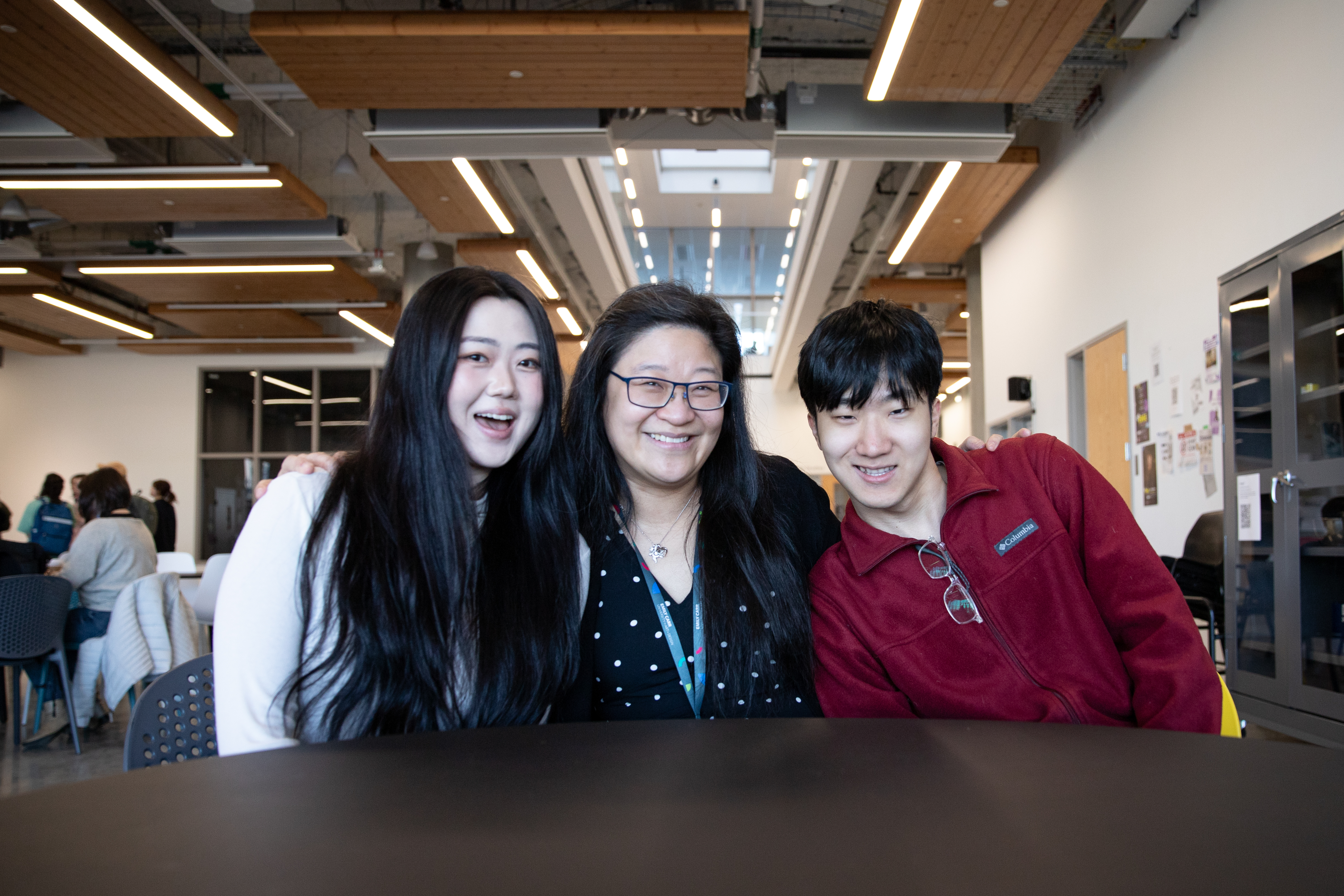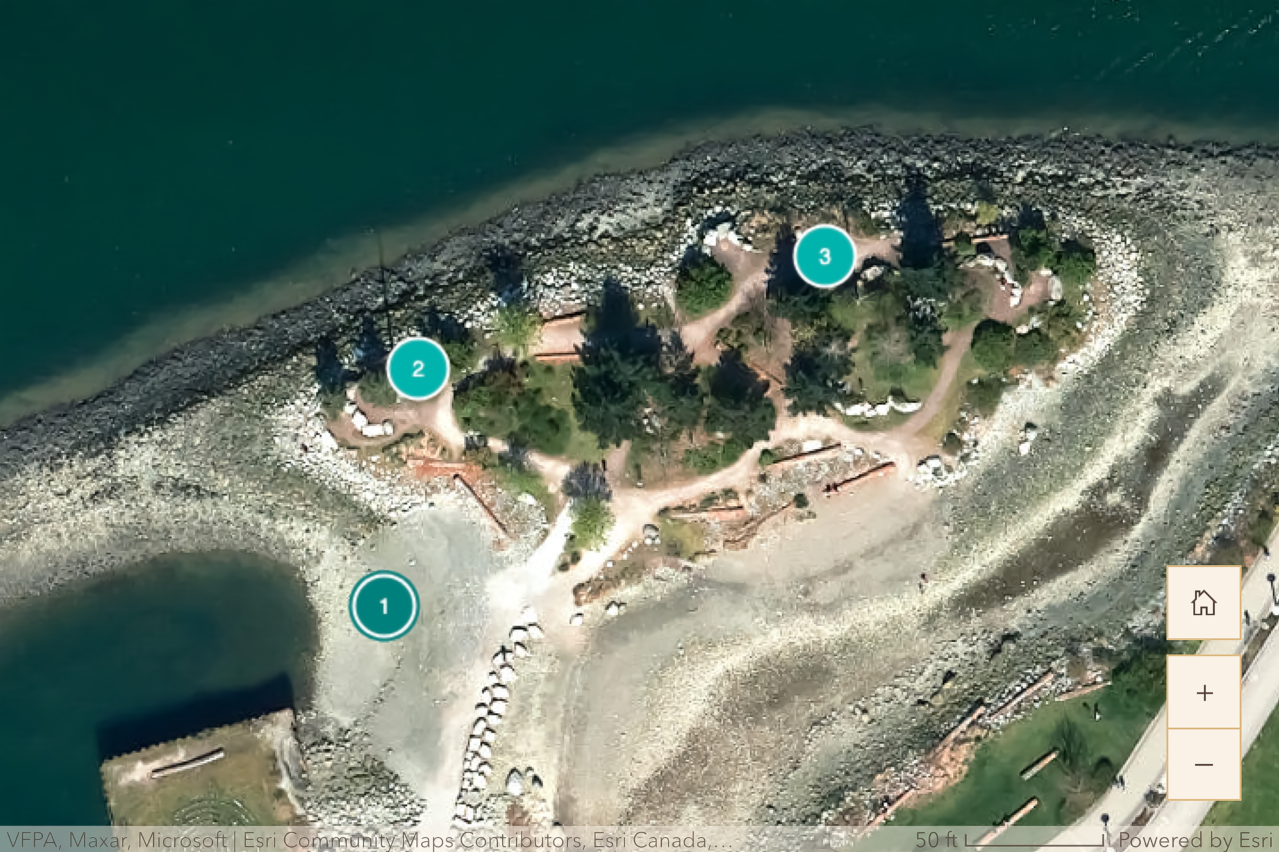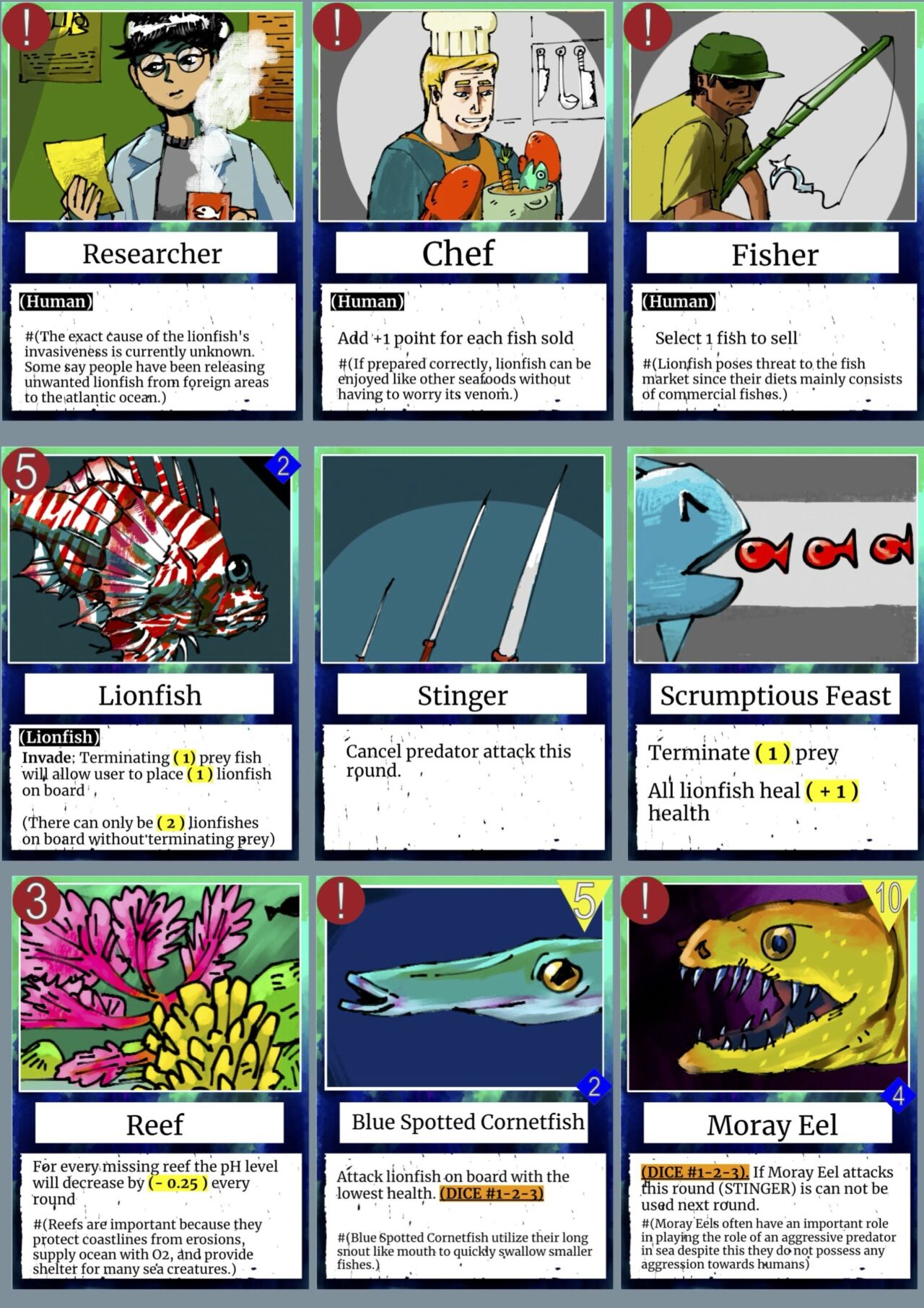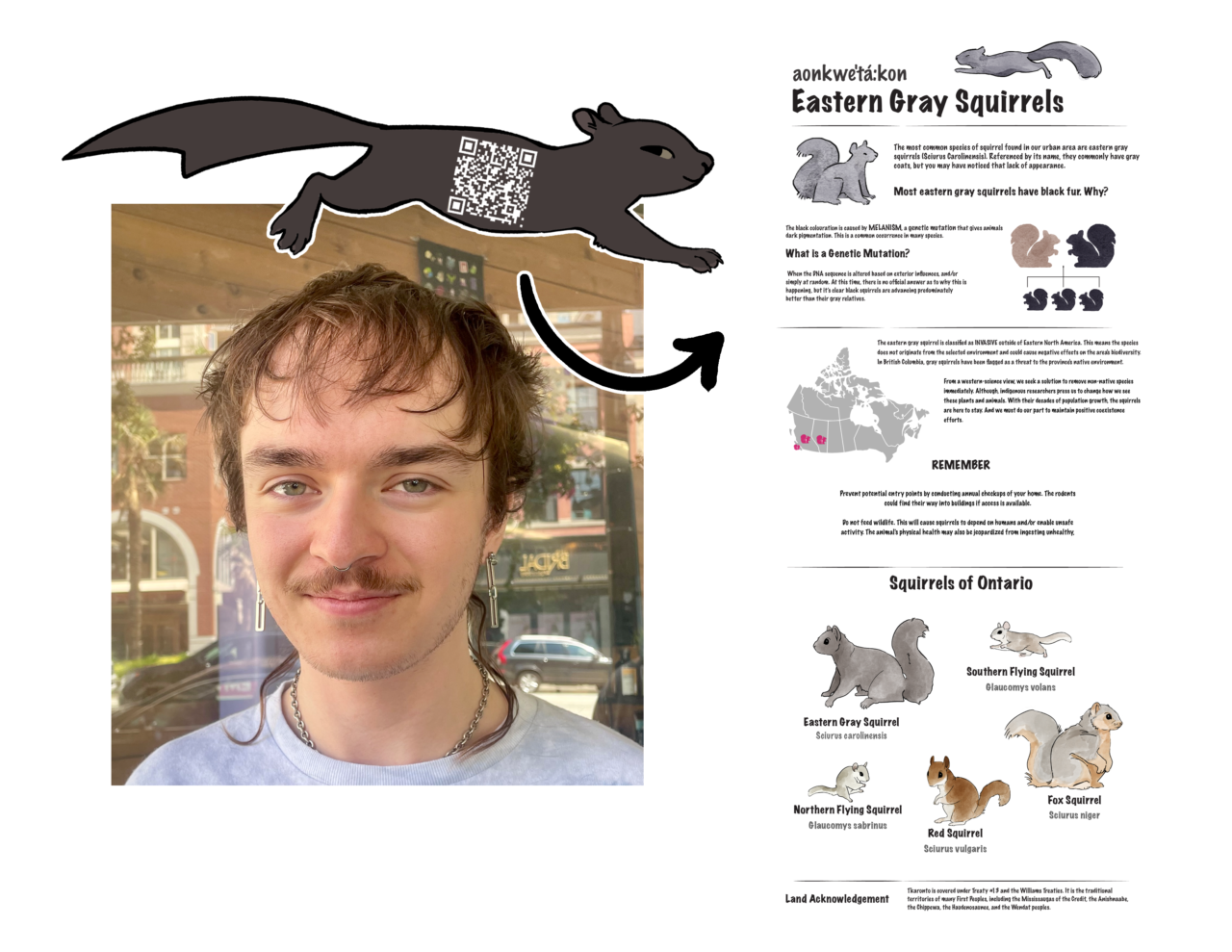ECU Students, Alums and Faculty to Co-Present at Science and Technology Awareness Conference

(From left): Designer Melissa Chung (BDes 2023), scientist and faculty member Poh Tan, and students Jaehyun Jun and Philip Newcombe (not pictured) will speak at the 2025 Science & Technology Awareness conference in late February. (Photo by Perrin Grauer)
Posted on
Faculty member Poh Tan and her three co-presenters will speak on integrating arts and science in culturally appropriate ways to encourage public literacy and engagement.
An Emily Carr University Art + Design (ECU) faculty member and three of her students are set to co-present at an upcoming science awareness conference themed around sustainability.
Educator and scientist Poh Tan, designer Melissa Chung (BDes 2023), and students Jaehyun Jun and Philip Newcombe will deliver talks on integrating arts and science in culturally appropriate ways to encourage public literacy and engagement.
“I’ll be talking about an arts-based approach to teaching science, as well as offering steps toward accounting for the importance of Indigenous ways of knowing within science,” Poh says. “Scientists and artists can learn from one another. We also have a responsibility to understand how our identities and intersections relate to place and land and how our practices may perpetuate colonial ideas without realizing it. When we understand this responsibility, we bring our hearts, spirit and soul back into the sciences.”
The 2025 Science & Technology Awareness conference will focus on connections between Science, Technology, Engineering & Math (STEM) literacy, mental and physical health, community wellness and environmental sustainability.
A growing movement known as STEAM (Science, Technology, Engineering, Arts & Math) advocates for the inclusion of the arts in an education system that heavily emphasizes STEM fields.

Melissa Chung’s project Mulmeong fosters a deeper connection to Vancouver’s natural spaces through self-healing exercises on Habitat Island in False Creek. (Image courtesy Melissa Chung)
Illustrating affinities between science and practices like design, visual arts and animation is a key part of Poh’s approach to teaching and learning. Rather than focusing solely on memorizing facts about subjects like cellular biology, anatomy or chemistry, Poh asks students to consider ideas such as bioethics and the history and philosophy of scientific thought as they create their projects.
“I try to show my students how science is already part of how they work and think and how it is compatible with their experiences and interests,” Poh says. “I tell my students that when you do science, you’re doing it for a population of people who are making decisions about their behaviours, their consumption and how they shape the society they belong to. And science can communicate in powerful ways unique to whatever discipline you are already studying.”
Poh met Jaehyun and Philip through the second-year science class she teaches at ECU and connected with Melissa while contributing to an Interaction Design course led by faculty member Eugenia Bertulis. Poh says the three emerging practitioners share a deep curiosity about integrating scientific ways of knowing with diverse disciplines.,
Including them as co-presenters will provide conference attendees with living examples of how science and creative disciplines can enhance and enrich one another. Each of their projects also demonstrate how ECU’s unique, hands-on learning experiences offer students ideal opportunities to bring these interdisciplinary lessons to life, she adds.

An early draft version of Jaehyun Jun’s lionfish card game showcases the drawing process behind his illustrated ocean conservation project. (Image courtesy Jaehyun Jun)
For instance, Melissa’s keen design ability led to a project created in collaboration with Poh. Inspired partly a personal encounter with the calming power of False Creek, she designed three activities for water meditation on Habitat Island. Springboarding from Poh’s interactive seawall walking tour, Melissa’s project also includes an interactive narrative encouraging new ways of experiencing the urban waterway.
“Working and studying with Poh gave me an opportunity to explore new design practices,” Melissa says. “It changed my learning and working style. And I was able to bring my personal experience to a project that fosters a deeper connection to False Creek. I feel very proud, especially now that I’ll be presenting to a huge audience.”
Jaehyun, a second-year 2D + Experimental Animation student, leveraged his drawing abilities to design an illustrated card game focusing on his longtime passion for ocean conservation. The game centres around the lionfish, a species whose spread into the Atlantic has negatively impacted native ecosystems. Through this fish’s story, players learn about a broader environmental of pressures influencing oceanic health.
“Invasive species are often seen as their own problems, which tend to overshadow what’s harming the seas, such as overfishing, pollution and other human activities,” Jaehyun says. He notes the game also introduces players to conservation strategies drawn from both Western science and Indigenous ways of knowing. “It was important for me to shed light on that. There’s a whole web of influences impacting this ecosystem. With Poh, I learned how to make things engaging so people can have fun while they learn.”

Philip Newcombe (pictured left) drew on his cross-disciplinary experience to produce a website and public engagement campaign encouraging exploration of local wildlife. (Image courtesy Philip Newcombe)
Philip, a Visual Arts student set to graduate this year, was accustomed to working across disciplines, including with ideas and methods drawn from experimental science. Studying with Poh provided an opportunity to expand his disciplinary repertoire further into digital space.
He created a website about a creature in many people’s backyards — the Eastern grey squirrel. Philip, who now lives in Toronto, notes the black squirrels so common to Ontario are actually grey squirrels with a unique genetic condition known as melanism. His illustrated website explores this often-overlooked animal, while a series of QR codes and 3D signs designed for public parks bring users to the database to learn more about their local wildlife.
“The root of my work has always been around biological science,” Philip says. “This was an opportunity to push that forward into a project aimed at education. I’m very grateful for this chance to present my work. It feels like a big thing. It’s my first step into a more professional world, and it underscores how there’s a path I can succeed with and that I want to continue pursuing.”
The 2025 Science & Technology Awareness conference takes place from Feb. 25 to Feb. 27.
Visit ECU online to learn more about Undergraduate Programs at Emily Carr University.